Abstract
Spinal Muscular Atrophy (SMA) is a progressive neurodegenerative disorder characterised by the loss of upper and/or lower motor neurons. SMA is the leading genetic cause of infant mortality with an incidence of 1 in 6000 live births and a carrier frequency of about 1 in 50. Different types of disease (from SMAI to SMAV) have been described based on clinical severity and age of onset. The SMA-determining gene, Survival of Motor Neurons (SMN), is part of a 500 kb-inverted duplication on chromosome 5q13. Within the duplicated genes SMN1 and SMN2 can be found. Most (95%) SMA patients have deletions or conversion events of SMN1. The SMN2 gene primarily produces a transcript which lacks exon 7 and of which only 10-20% of its protein is functional. Although a variety of therapeutic trials are ongoing, only life-prolonging treatments are being developed. The knowledge gained regarding the pathogenesis of SMA remains limited, because the precise function of SMN is not yet known. Furthermore, it is not quite clear why motor neurons of the patients are the only cell type for which SMN expression level are unadequate for their normal activity, even if the affected genes have “housekeeping” functions. Both pharmacological or genetic approaches have been conducted for the therapy of SMA. Moreover, stem cells provide a further aspect to be analysed. In fact, the genetic modification of a small number of stem cells could give rise to a dividing population of therapeutic cells. These innovative approaches when united could be usefully adopted to replace lost cells and at the same time protect surviving motor neurons in SMA patients.
Keywords: Spinal Muscular Atrophy, gene therapy, gene targeting, pharmacological treatment, survival motor neuron gene
Current Genomics
Title: Therapeutic Strategies for the Treatment of Spinal Muscular Atrophy (SMA) Disease
Volume: 7 Issue: 6
Author(s): Federica Sangiuolo, Annalisa Botta, Antonio Filareto, Paola Spitalieri and Giuseppe Novelli
Affiliation:
Keywords: Spinal Muscular Atrophy, gene therapy, gene targeting, pharmacological treatment, survival motor neuron gene
Abstract: Spinal Muscular Atrophy (SMA) is a progressive neurodegenerative disorder characterised by the loss of upper and/or lower motor neurons. SMA is the leading genetic cause of infant mortality with an incidence of 1 in 6000 live births and a carrier frequency of about 1 in 50. Different types of disease (from SMAI to SMAV) have been described based on clinical severity and age of onset. The SMA-determining gene, Survival of Motor Neurons (SMN), is part of a 500 kb-inverted duplication on chromosome 5q13. Within the duplicated genes SMN1 and SMN2 can be found. Most (95%) SMA patients have deletions or conversion events of SMN1. The SMN2 gene primarily produces a transcript which lacks exon 7 and of which only 10-20% of its protein is functional. Although a variety of therapeutic trials are ongoing, only life-prolonging treatments are being developed. The knowledge gained regarding the pathogenesis of SMA remains limited, because the precise function of SMN is not yet known. Furthermore, it is not quite clear why motor neurons of the patients are the only cell type for which SMN expression level are unadequate for their normal activity, even if the affected genes have “housekeeping” functions. Both pharmacological or genetic approaches have been conducted for the therapy of SMA. Moreover, stem cells provide a further aspect to be analysed. In fact, the genetic modification of a small number of stem cells could give rise to a dividing population of therapeutic cells. These innovative approaches when united could be usefully adopted to replace lost cells and at the same time protect surviving motor neurons in SMA patients.
Export Options
About this article
Cite this article as:
Sangiuolo Federica, Botta Annalisa, Filareto Antonio, Spitalieri Paola and Novelli Giuseppe, Therapeutic Strategies for the Treatment of Spinal Muscular Atrophy (SMA) Disease, Current Genomics 2006; 7 (6) . https://dx.doi.org/10.2174/138920206778948691
| DOI https://dx.doi.org/10.2174/138920206778948691 |
Print ISSN 1389-2029 |
| Publisher Name Bentham Science Publisher |
Online ISSN 1875-5488 |
Call for Papers in Thematic Issues
Current Genomics in Cardiovascular Research
Cardiovascular diseases are the main cause of death in the world, in recent years we have had important advances in the interaction between cardiovascular disease and genomics. In this Research Topic, we intend for researchers to present their results with a focus on basic, translational and clinical investigations associated with ...read more
Deep learning in Single Cell Analysis
The field of biology is undergoing a revolution in our ability to study individual cells at the molecular level, and to integrate data from multiple sources and modalities. This has been made possible by advances in technologies for single-cell sequencing, multi-omics profiling, spatial transcriptomics, and high-throughput imaging, as well as ...read more
New insights on Pediatric Tumors and Associated Cancer Predisposition Syndromes
Because of the broad spectrum of children cancer susceptibility, the diagnosis of cancer risk syndromes in children is rarely used in direct cancer treatment. The field of pediatric cancer genetics and genomics will only continue to expand as a result of increasing use of genetic testing tools. It's possible that ...read more
Related Journals
 2
2
- Author Guidelines
- Graphical Abstracts
- Fabricating and Stating False Information
- Research Misconduct
- Post Publication Discussions and Corrections
- Publishing Ethics and Rectitude
- Increase Visibility of Your Article
- Archiving Policies
- Peer Review Workflow
- Order Your Article Before Print
- Promote Your Article
- Manuscript Transfer Facility
- Editorial Policies
- Allegations from Whistleblowers
- Announcements
Related Articles
-
Statistical Voxel-Based Methods and [18F]FDG PET Brain Imaging: Frontiers for the Diagnosis of AD
Current Alzheimer Research Towards Retinoid Therapy for Alzheimers Disease
Current Alzheimer Research Amyloid Formation in Surfactants and Alcohols: Membrane Mimetics or Structural Switchers?
Current Protein & Peptide Science The Nrf2-ARE Pathway: A Valuable Therapeutic Target for the Treatment of Neurodegenerative Diseases
Recent Patents on CNS Drug Discovery (Discontinued) Alzheimer's Disease: A Systemic Review of Substantial Therapeutic Targets and the Leading Multi-functional Molecules
Current Topics in Medicinal Chemistry Biocomputational Resources Useful For Drug Discovery Against Compartmentalized Targets
Current Pharmaceutical Design tPA in the Central Nervous System: Relations Between tPA and Cell Surface LRPs
Recent Patents on Endocrine, Metabolic & Immune Drug Discovery (Discontinued) Podocyte Mitosis – A Catastrophe
Current Molecular Medicine Meet Our Editorial Board Member
CNS & Neurological Disorders - Drug Targets The Role of IRE1 Signaling in the Central Nervous System Diseases
Current Neuropharmacology Targeting Abnormal Nrf2/HO-1 Signaling in Amyotrophic Lateral Sclerosis: Current Insights on Drug Targets and Influences on Neurological Disorders
Current Molecular Medicine RAGE: A Single Receptor for Several Ligands and Different Cellular Responses: The Case of Certain S100 Proteins
Current Molecular Medicine Non-Viral Methods For Generating Integration-Free, Induced Pluripotent Stem Cells
Current Stem Cell Research & Therapy Role of Autophagy in Parkinson’s Disease
Current Medicinal Chemistry Lewy Bodies: A Spectator or Salient Killer?
CNS & Neurological Disorders - Drug Targets The Serum Protein and Lipid Oxidation Marker Levels in Alzheimers Disease and Effects of Cholinesterase Inhibitors and Antipsychotic Drugs Therapy
Current Alzheimer Research One-Pot Multi-Component Route to Propargylamines Using Zinc Oxide Under Solvent-Free Conditions
Combinatorial Chemistry & High Throughput Screening Protein Kinase C Isozymes: Memory Therapeutic Potential
Current Drug Targets - CNS & Neurological Disorders GABA Receptors: Pharmacological Potential and Pitfalls
Current Pharmaceutical Design Chemoinformatics Profiling of the Chromone Nucleus as a MAO-B/A2AAR Dual Binding Scaffold
Current Neuropharmacology












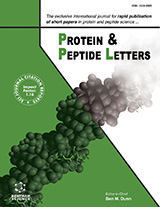
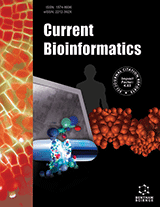
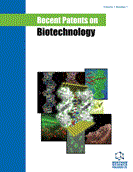
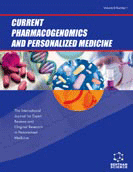
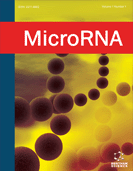
.jpeg)








